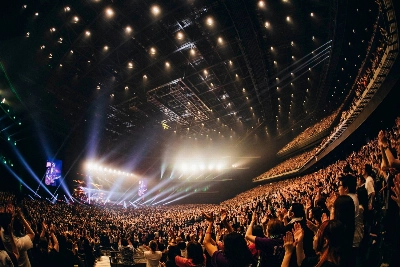Consumer inflation in Tokyo eased in September after outgoing Prime Minister Fumio Kishida reinstated energy subsidies to help households cope with one of the hottest summers on record.
Consumer prices excluding fresh food rose 2.0% in September, the slowest pace since May, according to the ministry of internal affairs Friday. That matched the median estimate of economists. A gauge that also strips out energy prices stayed at 1.6%.
Slowdowns in electricity and gas prices were the biggest factors behind the deceleration, with the government’s measures knocking 0.5 percentage point off overall inflation. Tokyo inflation is a leading indicator for national price trends.
The slower price growth caused by temporary factors isn’t likely to deter the Bank of Japan from conducting a rate hike late this year or early next year if conditions allow, as Gov. Kazuo Ueda has consistently pledged to raise borrowing costs if the economy performs in line with the bank’s projections.
However, with scant signs of overheating, Friday’s data will support the governor’s view that there is no need to rush with any moves. Ueda said earlier this week that upside inflation risks have receded after the yen posted recent gains. The BOJ is expected to stand pat when it next sets policy on Oct. 31.
"It’s no surprise that core inflation slowed due to government energy measures,” said Koya Miyamae, an economist at SMBC Nikko Securities. Noting instead that core-core inflation seems to have hit a bottom, he added "I don’t think the BOJ will make an immediate policy move but inflation is coming along with their expectations.”
Kishida decided to reintroduce subsidies for utilities from August to October after his approval ratings sagged below 30% amid simmering voter frustration over persistent inflation. Average temperatures hit record highs this summer, prompting authorities to issue heat warning alerts and urge residents to keep their air conditioners running.
The premier signaled his intention to step down by declaring in August that he wouldn’t run for reelection as head of his ruling Liberal Democratic Party.
The LDP vote takes place later Friday, with parliament expected to select a new premier on Oct. 1. Given the LDP’s dominance, its leader is all but certain to become Japan’s next prime minister.
BOJ watchers will be watching the process closely. Sanae Takaichi, a leading contender, is a strong monetary easing advocate who would likely complicate the BOJ’s path toward normalizing policy with further increases to borrowing costs.
Shinjiro Koizumi, one of the front-running candidates, has said he’ll immediately order the compilation of an economic package to help households contend with elevated inflation if he takes the helm. Japan’s key inflation gauge has stayed at or above the BOJ’s 2% inflation target for more than two years.
October will be a key month to measure the momentum for price increases as it marks the start of the fiscal year’s second half. The BOJ highlighted in its latest quarterly Outlook the month’s importance by noting that service prices are often revised in April and October. Service prices in September rose 0.6% from a year earlier, slightly slowing from 0.7% last month.


















With your current subscription plan you can comment on stories. However, before writing your first comment, please create a display name in the Profile section of your subscriber account page.